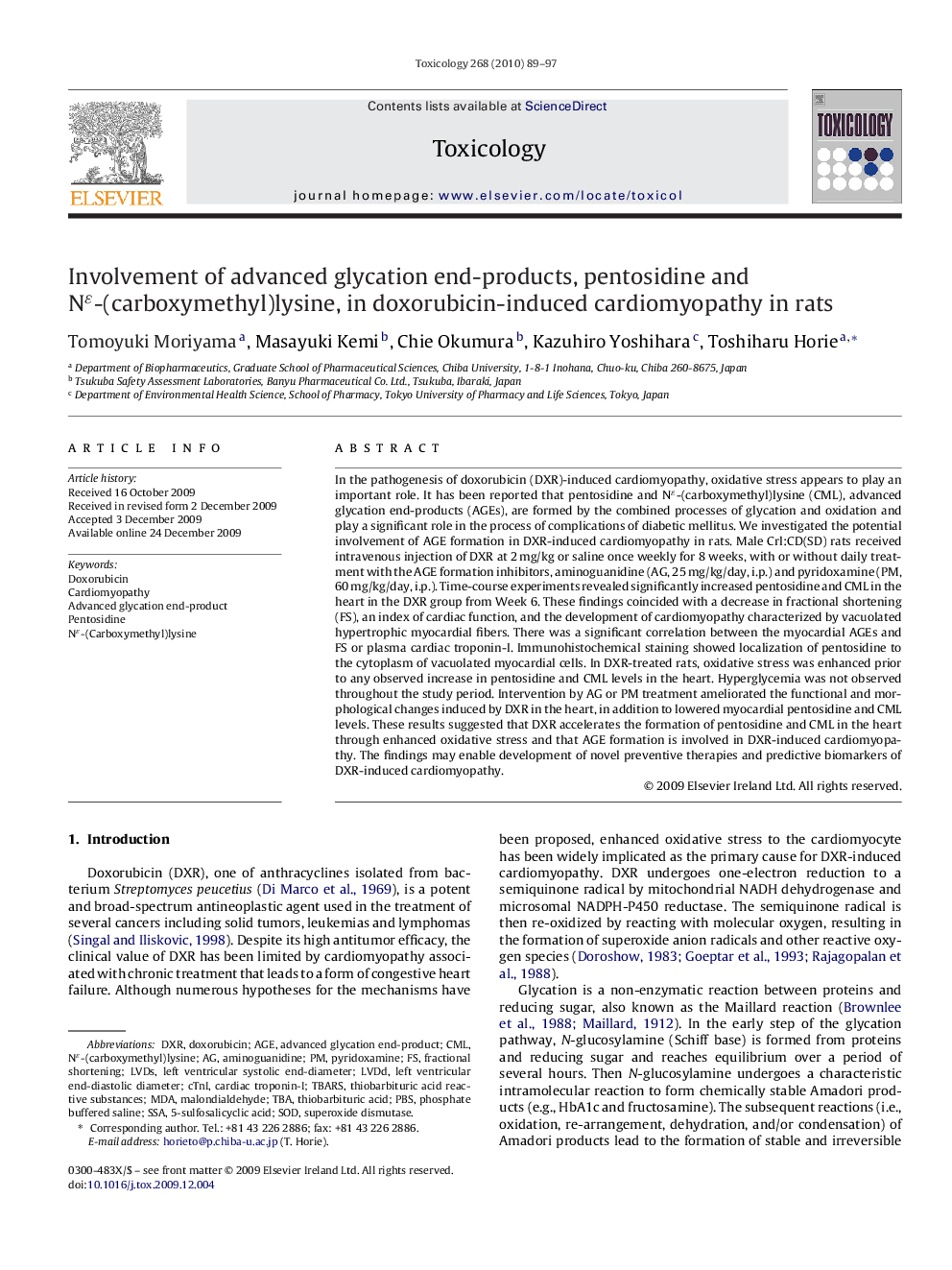| کد مقاله | کد نشریه | سال انتشار | مقاله انگلیسی | نسخه تمام متن |
|---|---|---|---|---|
| 2596667 | 1562388 | 2010 | 9 صفحه PDF | دانلود رایگان |

In the pathogenesis of doxorubicin (DXR)-induced cardiomyopathy, oxidative stress appears to play an important role. It has been reported that pentosidine and Nɛ-(carboxymethyl)lysine (CML), advanced glycation end-products (AGEs), are formed by the combined processes of glycation and oxidation and play a significant role in the process of complications of diabetic mellitus. We investigated the potential involvement of AGE formation in DXR-induced cardiomyopathy in rats. Male Crl:CD(SD) rats received intravenous injection of DXR at 2 mg/kg or saline once weekly for 8 weeks, with or without daily treatment with the AGE formation inhibitors, aminoguanidine (AG, 25 mg/kg/day, i.p.) and pyridoxamine (PM, 60 mg/kg/day, i.p.). Time-course experiments revealed significantly increased pentosidine and CML in the heart in the DXR group from Week 6. These findings coincided with a decrease in fractional shortening (FS), an index of cardiac function, and the development of cardiomyopathy characterized by vacuolated hypertrophic myocardial fibers. There was a significant correlation between the myocardial AGEs and FS or plasma cardiac troponin-I. Immunohistochemical staining showed localization of pentosidine to the cytoplasm of vacuolated myocardial cells. In DXR-treated rats, oxidative stress was enhanced prior to any observed increase in pentosidine and CML levels in the heart. Hyperglycemia was not observed throughout the study period. Intervention by AG or PM treatment ameliorated the functional and morphological changes induced by DXR in the heart, in addition to lowered myocardial pentosidine and CML levels. These results suggested that DXR accelerates the formation of pentosidine and CML in the heart through enhanced oxidative stress and that AGE formation is involved in DXR-induced cardiomyopathy. The findings may enable development of novel preventive therapies and predictive biomarkers of DXR-induced cardiomyopathy.
Journal: Toxicology - Volume 268, Issues 1–2, 31 January 2010, Pages 89–97